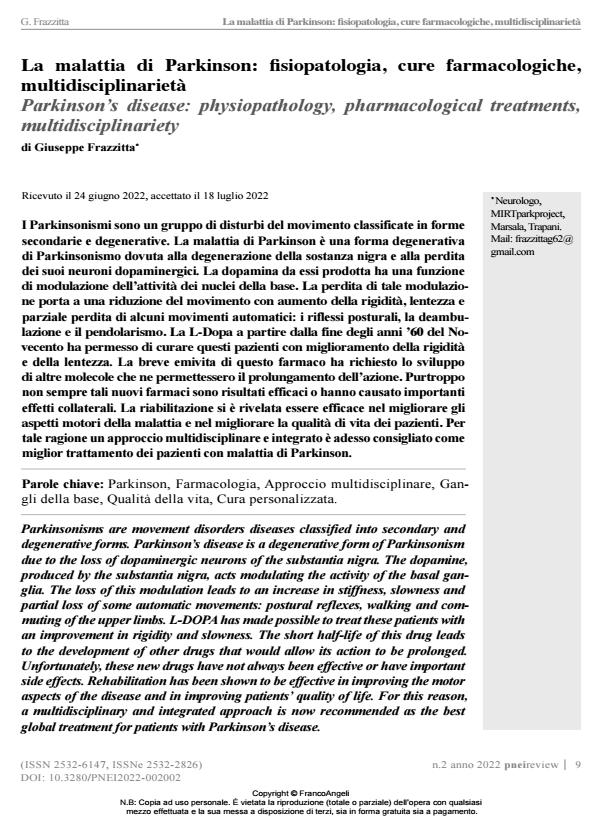Parkinson’s disease: physiopathology, pharmacological treatments, multidisciplinariety
Journal title PNEI REVIEW
Author/s Giuseppe Frazzitta
Publishing Year 2022 Issue 2022/2
Language Italian Pages 11 P. 9-19 File size 101 KB
DOI 10.3280/PNEI2022-002002
DOI is like a bar code for intellectual property: to have more infomation
click here
Below, you can see the article first page
If you want to buy this article in PDF format, you can do it, following the instructions to buy download credits

FrancoAngeli is member of Publishers International Linking Association, Inc (PILA), a not-for-profit association which run the CrossRef service enabling links to and from online scholarly content.
Parkinsonisms are movement disorders diseases classified into secondary and degenerative forms. Parkinson’s disease is a degenerative form of Parkinsonism due to the loss of dopaminergic neurons of the substantia nigra. The dopamine, produced by the substantia nigra, acts modulating the activity of the basal gan- glia. The loss of this modulation leads to an increase in stiffness, slowness and partial loss of some automatic movements: postural reflexes, walking and com- muting of the upper limbs. L-DOPA has made possible to treat these patients with an improvement in rigidity and slowness. The short half-life of this drug leads to the development of other drugs that would allow its action to be prolonged. Unfortunately, these new drugs have not always been effective or have important side effects. Rehabilitation has been shown to be effective in improving the motor aspects of the disease and in improving patients’ quality of life. For this reason, a multidisciplinary and integrated approach is now recommended as the best global treatment for patients with Parkinson’s disease.
Keywords: Parkinson, Pharmacology, Multidisciplinary approach, Basal gan glia, Quality of Life, Personalized care.
Giuseppe Frazzitta, La malattia di Parkinson: fi siopatologia, cure farmacologiche, multidisciplinarietà in "PNEI REVIEW" 2/2022, pp 9-19, DOI: 10.3280/PNEI2022-002002